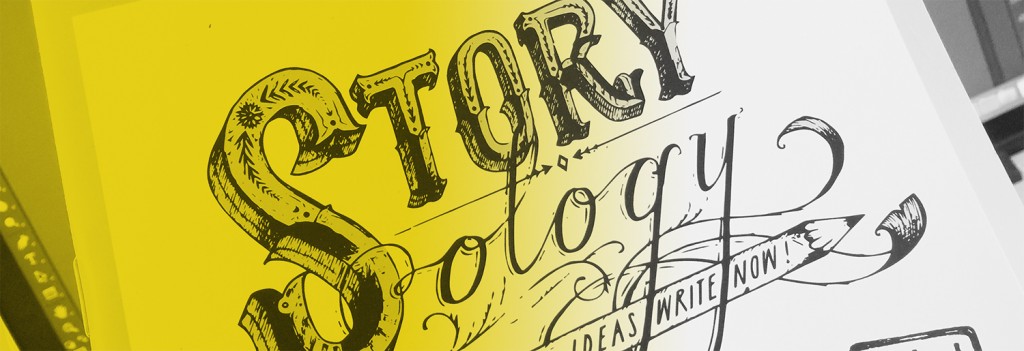Digital media
What’s the story?
The end of 2014 saw a huge gathering of new and old media, established entrepreneurs and startup newbies at the Walkleys’ Storyology Conference. Day 1 was the Innovation Focus day, which I was lucky enough to attend via a Walkleys Innovation Scholarship.
The program was diverse and, as a web developer and designer attending on behalf of Croakey, a public health blog, I found the sessions inspiring. There’s obviously a lot of innovation happening in the media, but it is sometimes difficult to get a clear idea of where the innovation is heading.
Smaller organisations and startups that are not heavily capitalised need to work out what technology to adopt to reach their markets. The big players have more options and are able to experiment more.
Here are a few key points gleaned from the day’s events.
‘What’s the story?’ – perhaps it would be better to ask ‘How is the story told?’
The opening address by Neal Mann, Multimedia Innovations Editor at the Wall Street Journal, focused mostly on the adoption of and experimentation with new platforms. His most important advice was: ‘Mobile First’.
Neal talked of how media organisations like the WSJ changed their content to suit YouTube broadcast, while the John Oliver show in the US was designed for broadcasting on YouTube but was shown on TV.
Adapt to platforms – mobile first – @wsj changed how it’s content was delivered on YouTube @fieldproducer #Storyology
— Mitchell Ward (@rocklilydesign) December 1, 2014
Working with your audience – as easy as ABC
The afternoon session with ABC Open’s Janine Googan and Ian Walker emphasised the platform’s audience-driven content. Text, image and video uploads form the bulk of their content. With the assistance of a network of content producers, ABC Open is able to up-skill their users in storytelling, photography and video production.
Just love seeing this @abcopen story again. Singing dingo. #storyology pic.twitter.com/soapyCAWEe
— Mitchell Ward (@rocklilydesign) December 1, 2014
Recent innovations include Open Drum which focuses on issues-based storytelling, with the topic changed each week, and Speak Your Mind, a text-based mental health project that developed into an ABC2 program.
Bigger than the Texas Tribune
Emily Ramshaw, the editor of the Texas Tribune, covered tech innovation, audiences and funding models during the Perfect Storm panel discussion.
Emily sees the Tribune as an online magazine that seeks to inform readers of important events that affect their communities – they have been particularly vocal on coal seam gas fracking in the state of Texas. They embrace interactive technologies to tell the stories and big breaking stories will sometimes get their own banners on the homepage.
Interactive maps, video, animation, timelines and few words @eramshaw #story
— Mitchell Ward (@rocklilydesign) December 1, 2014
At first glance, the Texas Tribune looks like a typically large media organisation. Their About Us page gives a different picture with details about their non-profit, non-partisan ethos.
The Texas Tribune is a nonpartisan, nonprofit media organization that promotes civic engagement and discourse on public policy, politics, government and other matters of statewide concern. Our vision is to serve the journalism community as a source of innovation and to build the next great public media brand in the United States.
Check out this Walkley’s vox pop with Emily, where she talks about keeping funding and editorial like church and state in a not-for-profit news organisation.
‘Innovation is incremental, not a BIG BANG’
These are the words of Aron Pilhofer, executive editor of digital at the Guardian, during his keynote presentation. He says that innovation is measurable and that some innovations are brilliant but are too expensive – siting the New York Times NYT Now iPhone app.
.@pilhofer from The Guardian – ‘we’re still making newspaper shaped things and calling it digital’ #Storology
— Mitchell Ward (@rocklilydesign) December 1, 2014
Perhaps that’s the story – innovation remains a “work-in-progress”.
**************
On twitter
Walkleys – @walkleys
Croakey – @croakeyblog
Wall Street Journal – @WSJ
Neal Mann – @fieldproducer
ABC Open – @abcopen
Ian Walker, ABC Open – @mrwalkerabcopen
Texas Tribune – @TexasTribune
Emily Ramshaw – @eramshaw
Aron Pilhofer – @pilhofer
The Guardian – @guardian
The New York Times – @nytimes

